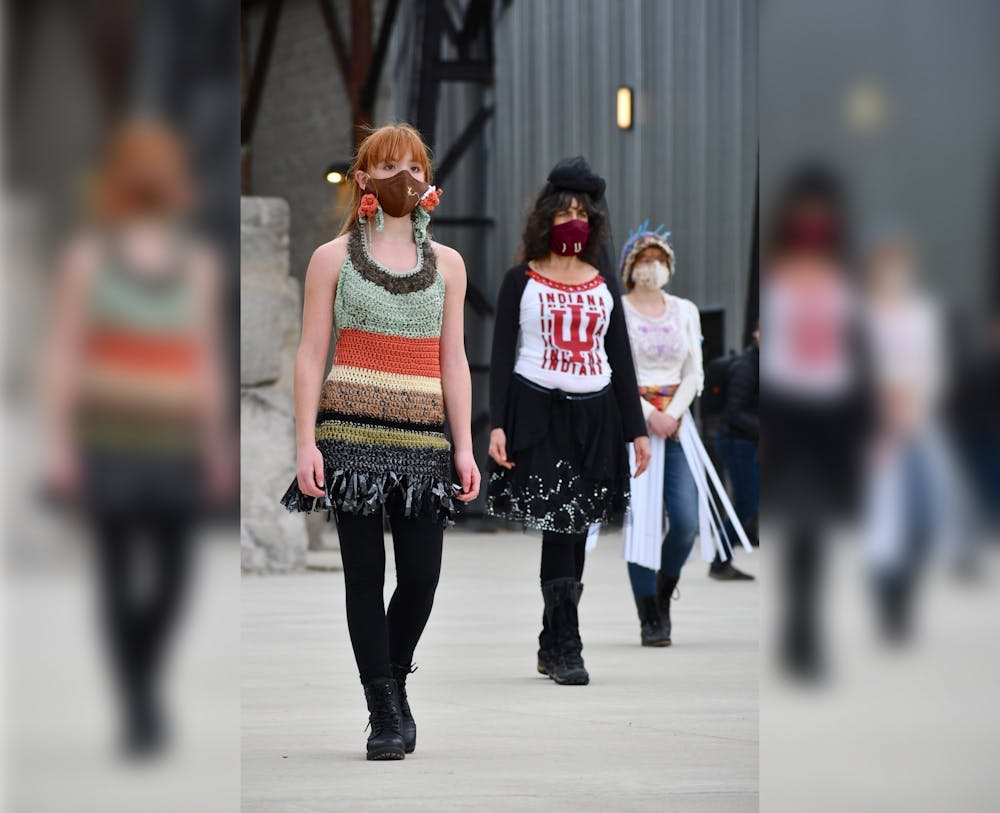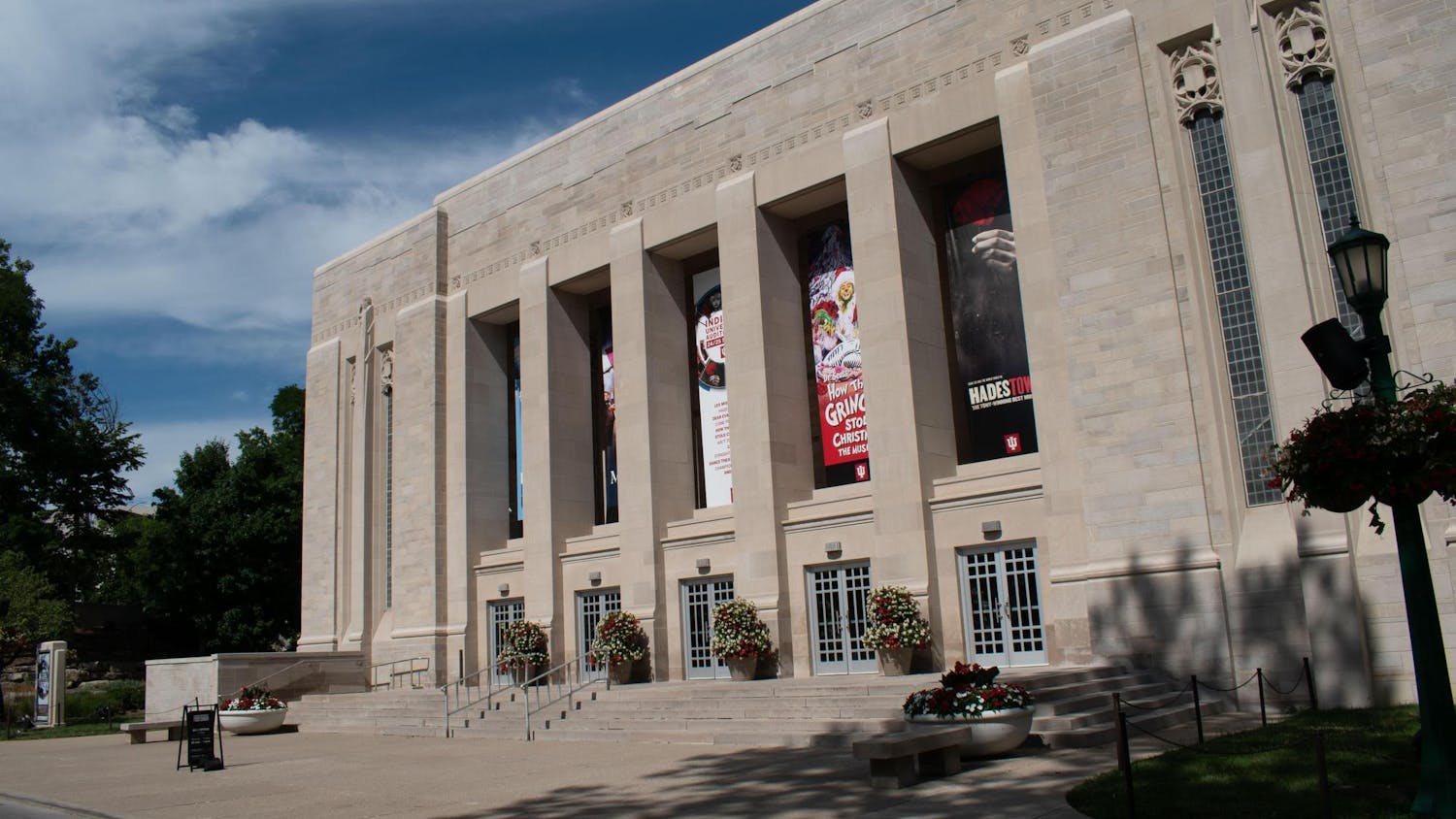Models will take the stage Sunday night at Switchyard Park Pavilion to display garments made by Bloomington designers out of trash or old clothing as part of the annual Trashion Refashion Show, a runway show emphasizing the importance of sustainability by transforming materials destined for the landfill into fashionable clothing.
The two divisions, trashion and refashion, capture different ways to create sustainable clothing, model, designer and steering committee member Jeanne Smith said.
The trashion division focuses on transforming non-wearable trash into clothing, while the refashion division focuses on upcycling old clothes into new garments. According to the Trashion Refashion website, designs must be at least 90% recycled materials.
Designer Thomas Emhoff is participating in the trashion category by turning burlap coffee bean sacks from his previous job at a coffee shop into clothing. Designer Betty Davis is participating in the refashion category by making her new outfit out of an old pair of jeans, quilting scraps and her mother’s silk robe from the 1950s.
As a senior fashion design student at IU, Emhoff said he feels a responsibility to acknowledge the harmful impact of the fashion industry on the environment.
“I feel like it would be incredibly ignorant to be a part of the process of fashion and making without addressing the humongous elephant in the planet of climate change,” Emhoff said.
Encouraged to participate by his professors, Emhoff said he gained valuable experience and learned from Trashion Refashion.
“It's valuable learning lessons from the idea of not treating something as trash, especially clothes, which for so long have been in people's lives for decades,” Emhoff said. “And what makes this experience even better is the community involvement and how many different people there are. I love seeing everybody's stuff. It just warms my heart in a way.”
Project manager Stephen Hale agreed that the sense of community makes Trashion Refashion special. Hale said the event is organized by a diverse and creative group whose passion can be felt by the audience watching the show.
“I think it is a great experience of energy and creativity and community all coming together. You're in the audience and you feel that,” Hale said. “This group on this committee, it's just an incredible bunch of people with diverse talents and diverse perspectives. I have a blast with these people.”
Hale said he appreciates the designers and models because they use their art to highlight the importance of sustainability. Hale said he felt amazed by their creativity, marveling over a designer’s idea this year to transform pet vaccination tags into clothing.
“We've heard things about recycle. We've heard things about don't waste. We hear the idea but this is an embodiment of that idea,” Hale said. “It's the power of the creative, the power of art to help us understand what's going on in our world.”
Although Hale now organizes the show, he began as a Trashion Refashion model in 2012. As an engineer, Hale said he never dreamed he would model Jeanne Smith’s eccentric designs in a sustainable fashion show but he fell in love with the Trashion Refashion’s cause and community.
“To me, a really important aspect of Trashion is taking quote ordinary people and putting them in an extraordinary situation,” Hale said. “That's what it's like, when you're out there under the lights in front of hundreds of people.”
As an environmental activist and photographer, Smith photographed the first Trashion Refashion in 2009 and has played a number of roles since including model, designer and committee member.
Smith said the supportive community is what keeps her coming back to Trashion Refashion year after year. There is a girl designing clothing this year that began participating in the show before she could walk— being held in her mother’s arms as she modeled, Smith said.
“It’s art, it’s community, it’s sustainability,” Smith said.
Trashion Refashion also feels like family to designer Betty Davis, who began designing outfits for her two granddaughters to model seven years ago and now helps her granddaughters design their own sustainable garments.
Davis encouraged everyone to attend the event because it is an entertaining blend of activism and art. Admission costs $10, according to the website.
“They are going to see the most outrageous outfits as well as the most useful outfits. All made through somebody's creativity,” Davis said. “It is so inspiring to see what people do.”




